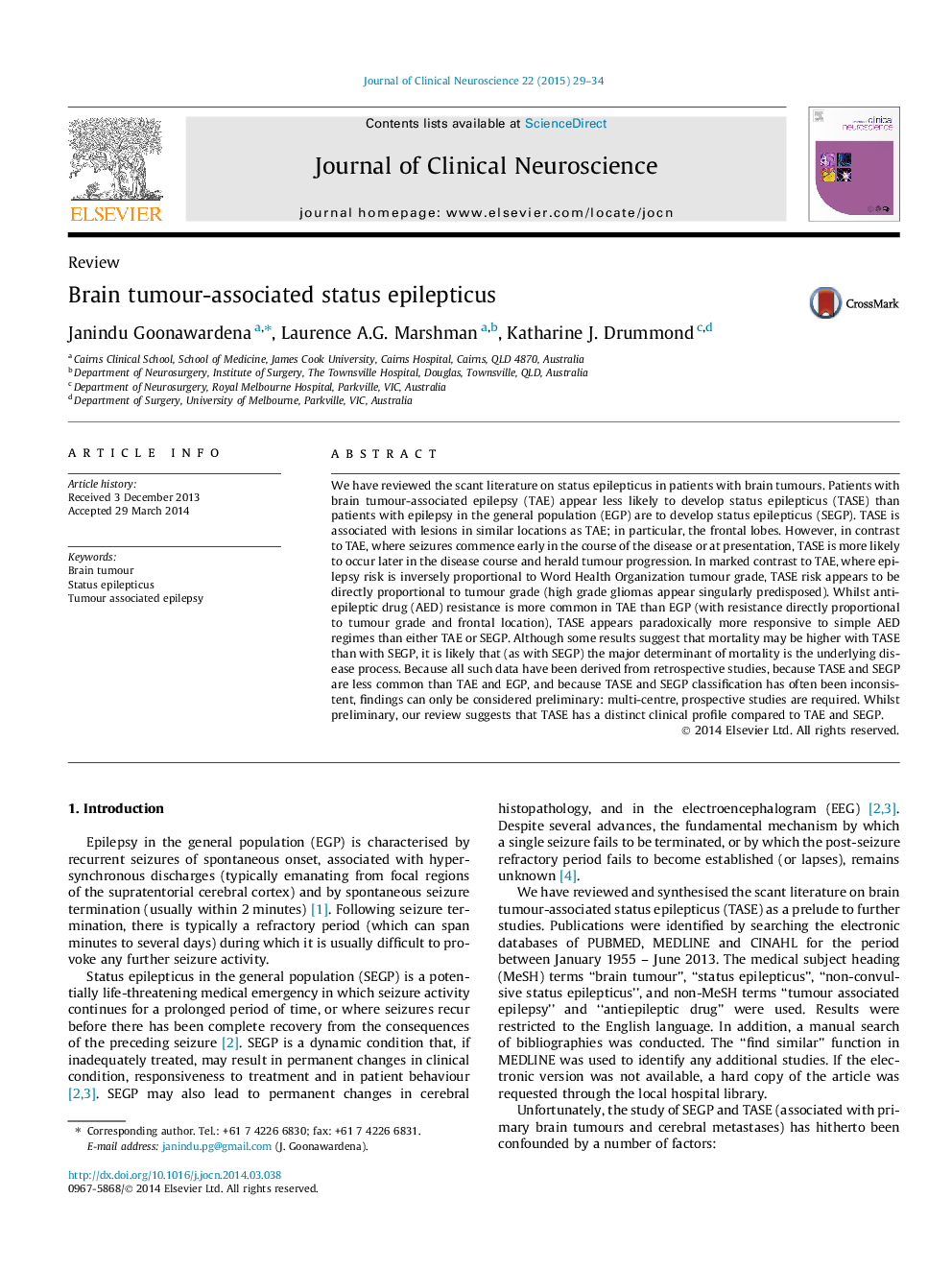| Article ID | Journal | Published Year | Pages | File Type |
|---|---|---|---|---|
| 3058958 | Journal of Clinical Neuroscience | 2015 | 6 Pages |
We have reviewed the scant literature on status epilepticus in patients with brain tumours. Patients with brain tumour-associated epilepsy (TAE) appear less likely to develop status epilepticus (TASE) than patients with epilepsy in the general population (EGP) are to develop status epilepticus (SEGP). TASE is associated with lesions in similar locations as TAE; in particular, the frontal lobes. However, in contrast to TAE, where seizures commence early in the course of the disease or at presentation, TASE is more likely to occur later in the disease course and herald tumour progression. In marked contrast to TAE, where epilepsy risk is inversely proportional to Word Health Organization tumour grade, TASE risk appears to be directly proportional to tumour grade (high grade gliomas appear singularly predisposed). Whilst anti-epileptic drug (AED) resistance is more common in TAE than EGP (with resistance directly proportional to tumour grade and frontal location), TASE appears paradoxically more responsive to simple AED regimes than either TAE or SEGP. Although some results suggest that mortality may be higher with TASE than with SEGP, it is likely that (as with SEGP) the major determinant of mortality is the underlying disease process. Because all such data have been derived from retrospective studies, because TASE and SEGP are less common than TAE and EGP, and because TASE and SEGP classification has often been inconsistent, findings can only be considered preliminary: multi-centre, prospective studies are required. Whilst preliminary, our review suggests that TASE has a distinct clinical profile compared to TAE and SEGP.
